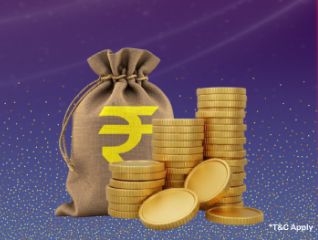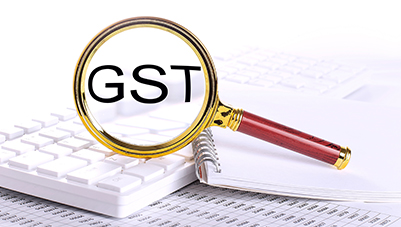New GST Rate and HSN Code on Two-Wheelers (Bikes)
GST Reform 2.0, effective September 22, 2025, has introduced a streamlined and more balanced tax structure for two-wheelers. The earlier 31% effective tax rate for motorcycles above 350cc has been replaced with a higher 40% rate, while taxes for the mass-market segment have been significantly reduced.
Vehicle Type (by Engine Size)
|
Previous Tax Rate
|
New Tax Rate (from Sep 22, 2025)
|
HSN Code
|
Engine < 350cc
|
28% GST
|
18% GST
|
8711
|
Engine > 350cc
|
28% GST + 3% Cess = 31%
|
40% GST
|
8711
|
Electric Two-wheelers
|
5% GST
|
5% GST
|
8711
|
GST rates on motorbikes after reform 2.0
The revised tax structure introduces a clear classification based on engine capacity, resulting in significant price shifts across the two-wheeler market.
- Motorcycles and scooters up to 350cc: Now taxed at a reduced GST rate of 18%, this marks a substantial cut for the mass-market segment. It benefits a wide range of popular models, including the Royal Enfield Classic 350, most scooters, and commuter motorcycles.
- Motorcycles above 350cc: Reclassified as "luxury" items, these now attract a much higher GST rate of 40%. This represents a sharp increase from the previous effective rate and is expected to raise prices for premium models from brands such as Royal Enfield, KTM, and Triumph.
- Electric two-wheelers: The GST rate remains unchanged at a concessional 5%. This reflects the government’s continued focus on encouraging the shift toward environmentally friendly electric mobility.
GST calculation on two-wheeler (bike)
Under the new GST regime, calculating tax on two-wheelers has become more straightforward, thanks to the removal of the cess for most models. Now, the total tax is applied as a flat percentage on the ex-showroom price, making the final cost more transparent for buyers.
Basic GST calculation formula:
Total Tax = Ex-showroom Price × GST Rate
Example – Small bike (engine < 350cc):
- Ex-showroom price: Rs. 1,20,000
- GST rate: 18%
- Total tax: Rs. 1,20,000 × 18% = Rs. 21,600
- Final price: Rs. 1,20,000 + Rs. 21,600 = Rs. 1,41,600
This is a noticeable drop in overall cost compared to the earlier tax structure.
Example – Premium bike (engine > 350cc):
- Ex-showroom price: Rs. 3,00,000
- GST rate: 40%
- Total tax: Rs. 3,00,000 × 40% = Rs. 1,20,000
- Final price: Rs. 3,00,000 + Rs. 1,20,000 = Rs. 4,20,000
While the calculation is simple, using an online GST calculator can help you quickly get an accurate breakdown of the tax and total price.
Impact of GST on the Two-Wheeler Industry
GST Reform 2.0 has brought a mixed but largely positive impact on the two-wheeler industry:
- Greater affordability for the mass market: A 10% reduction in GST on smaller motorcycles and scooters has lowered ex-showroom prices, making them more accessible—particularly for buyers in rural and semi-urban areas.
- Changing consumer preferences: The significant tax increase on motorcycles above 350cc may push buyers to consider more affordable sub-350cc models or explore electric alternatives.
- Support for electric vehicle adoption: The unchanged low GST rate of 5% on electric two-wheelers, combined with the higher tax burden on large-capacity petrol bikes, strengthens the financial appeal of EVs and is likely to accelerate their uptake.
Input tax credit (ITC) on GST on two-wheelers
The core rules for claiming input tax credit (ITC) on two-wheelers remain the same—ITC is generally allowed only for vehicles used strictly for business purposes. However, the revised GST rates directly affect the amount of credit a business can claim.
- Eligibility: ITC can be claimed only if the two-wheeler is used exclusively for commercial activities, such as delivery services, rentals, or official business travel.
- Ineligibility: ITC cannot be claimed if the vehicle is intended for personal use, whether by the business owner or an employee.
- Required documentation: A valid tax invoice and GST registration are essential to support any ITC claim.
Impact of GST reform 2.0 on ITC for two-wheelers
Although the core rules for input tax credit (ITC) remain unchanged, the revised GST rates directly affect the amount of credit businesses can claim:
- For businesses using small two-wheelers: Companies that use bikes with engine capacities below 350cc for commercial purposes can now claim ITC at the reduced GST rate of 18%, down from the earlier 28%. This results in a lower upfront tax cost on the purchase.
- For businesses using premium bikes: Businesses using motorcycles above 350cc for commercial use can now claim ITC at the higher rate of 40%. The removal of the previously ineligible cess simplifies the process and allows the full tax amount to be credited.
Conclusion
In summary, GST Reform 2.0 brings significant changes to the two-wheeler market by reducing taxes on mass-market models, increasing them for premium bikes, and maintaining incentives for electric vehicles. These adjustments enhance affordability for consumers and promote cleaner mobility options. At the same time, businesses benefit from more transparent input tax credit provisions. For companies investing in vehicle fleets or delivery operations, combining GST advantages with an appropriate business loan can help manage costs effectively and support long-term growth and financial planning.

















